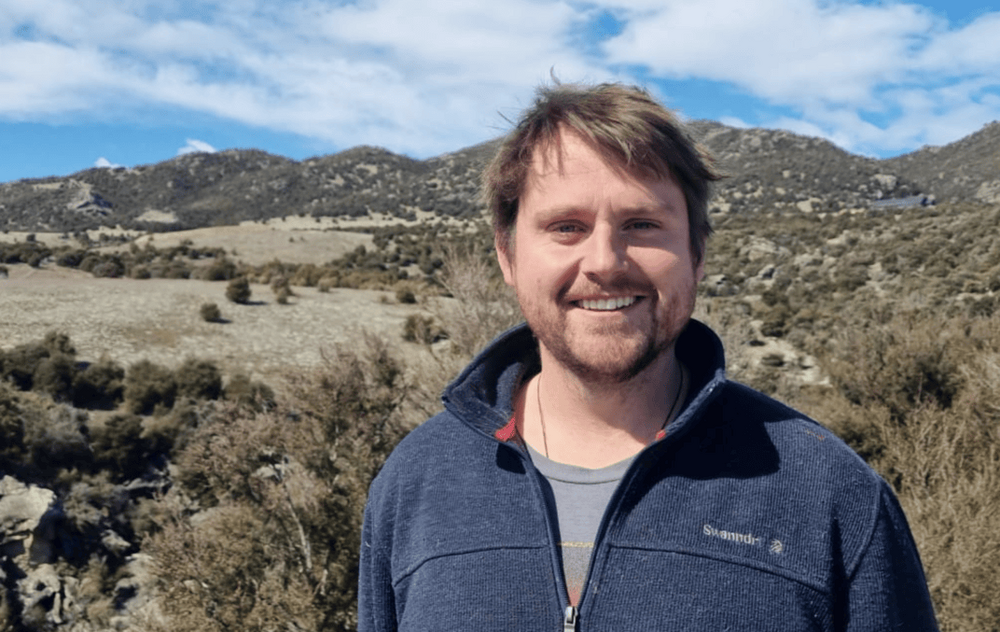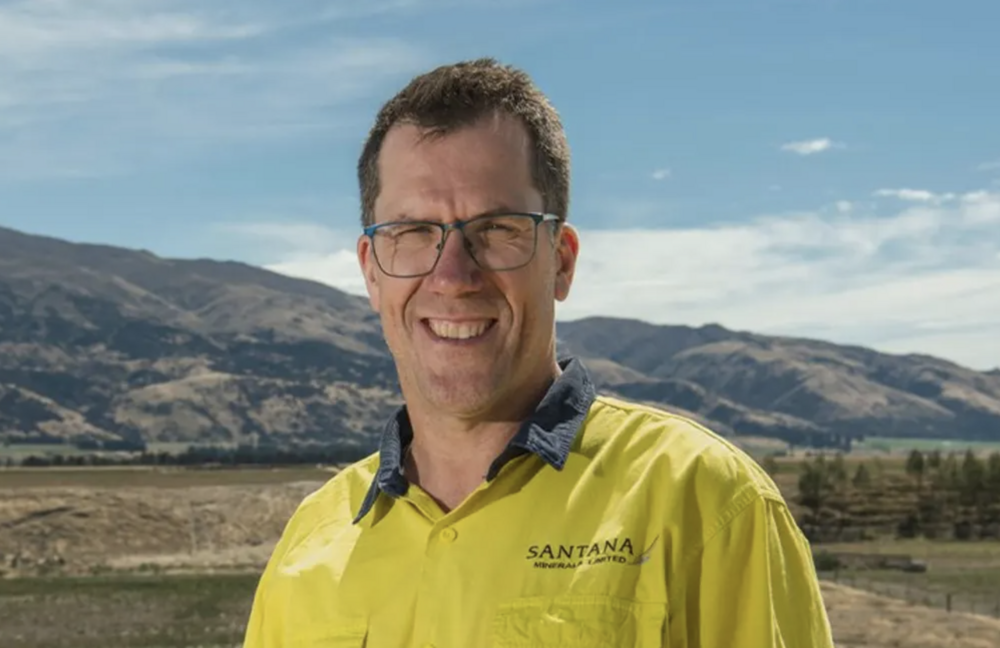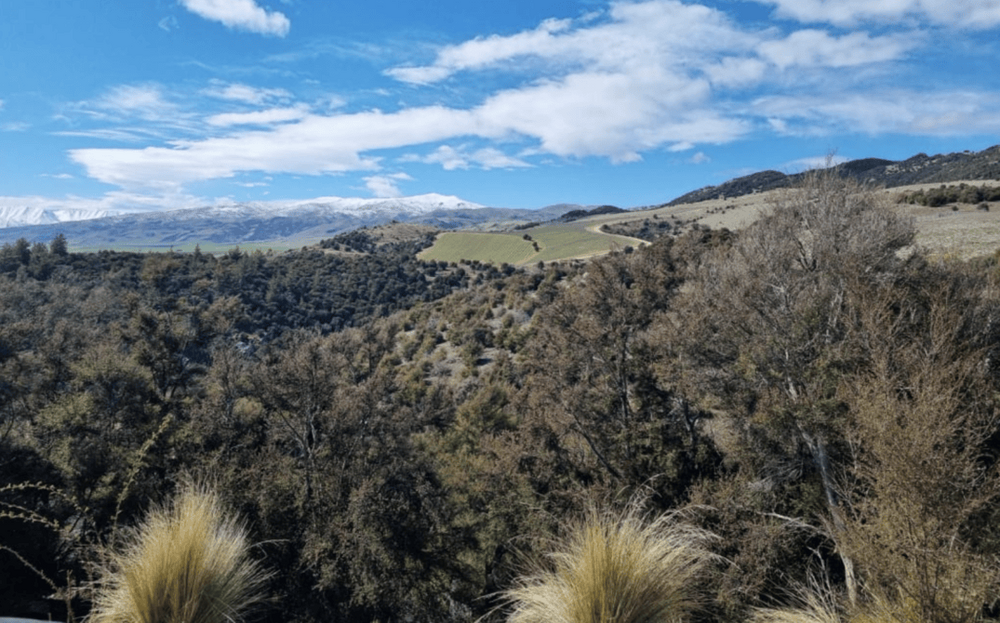Proposed gold mine risks 'already established significant industries' - locals
RNZ
24 September 2024, 8:42 PM
 Bendigo winegrower and Sustainable Tarras spokesperson Rob van der Mark said the local community was worried about the potential rapid industrialisation of their iconic landscapes.
Bendigo winegrower and Sustainable Tarras spokesperson Rob van der Mark said the local community was worried about the potential rapid industrialisation of their iconic landscapes.Central Otago locals are worried a proposed gold mine will hit industry and devastate the special - and spectacular - natural environment.
Santana Minerals believes the hills between Bendigo and Ophir could hold $4.4 billion worth of gold, and started hosting community drop-in sessions this week.
The company hopes to submit a fast track application in February if the new law passes, and offer 250 full time jobs living in the surrounding communities.
A dirt road winds its way up the hills in Bendigo towards The Canyon at Tarras Vineyards, overlooking vineyards, farmland, the Clutha River and the Dunstan Range.
Venue and vineyard owner Hayden Johnston was worried what it would mean for business to have a possible open pit gold mine as a nearby neighbour with all of the noise, lights and traffic.
"You're transported to a special place and industrialising that with a gold mine so close is just destruction. I'm very concerned that the reason that people enjoy being here so much will be taken away," he said.

The Canyon at Tarras Vineyards owner Hayden Johnston welcomes the start of regular community drop in sessions but said they had a lot of unanswered questions.
Noise travels far around the valley. He was kept awake by overnight frost fans at cherry orchards, and said the mine would be a similar distance away and likely operating continuously.
He did not believe open cast mining fit with the sustainable approach local vineyards were taking, but he welcomed the start of regular drop-in sessions with Santana Minerals in Cromwell and Tarras.
"Their plans have not been available publicly and also the expert reports that would give us most of the answers to what are the noise levels, what are the visual impacts, what are the sounds, how is the sound going to travel, and those sorts of things, and the containment measures," Johnston said.
Central Otago Winegrowers Association board member Donald van der Westhuizen said Bendigo was prime vineyard territory with strong organic production.
The area is one of the most parched parcels of land in the country with the Clutha River Mata Au acting as a lifeblood for the region. He was worried about the risks of heavy metals - including arsenic - escaping from the site into the river.

Central Otago Winegrowers Association board member Donald van der Westhuizen is concerned about the risks to other industries if the gold mine goes ahead.
He was not sure the benefits outweighed the potential cost.
"Allowing an operation such as what Santana's proposing, you risk already established significant industries within the area. All of which already contribute a significant amount to the local economy and possibly even more so than the proposed mining operation," he said.
Visitors were attracted to the natural beauty and their reputation for sustainability, van der Westhuizen said.
"Anything that poses risk to that reputation poses risk to both Central Otago winegrowers and the tourism industry."
Santana Minerals has applied for the mine to be considered under the new Fast Track Approvals Bill, which is still being worked on by the government.
Van der Westhuizen thought the fast track process was problematic if it took such a complex project and made a decision in about six months.
Bendigo winegrower and Sustainable Tarras representative Rob van der Mark said there were a lot of questions and he was not sure they would get answers if the fast track process kicked in.
"We simply don't know what we will inherit long term. We don't know what kind of financial bond would be appropriate to fix whatever damage may occur in the future. How long it will take to restore the land," van der Mark said.
He was not sure how the company intended to fill the jobs without taking staff from existing businesses or not exacerbating the housing shortage.

Santana Minerals chief executive Damian Spring said they would be consulting with locals throughout the process.
Santana Minerals chief executive Damian Spring wanted to allay their environmental concerns.
"Our objective is there will be no effects. That's how it works today you have to put up a proposal that you understand your geology, your environment, your hydrology, meteorology, everything. You combine it and you model it up and ensure that whatever water comes down to the monitoring point meets the quality that's required," he said.
The community was generally supportive of the project with a lot of interest at a recent chamber of commerce event, he said.
"For exploration companies, you're really only as good as your last drill hole because all the money that you plow into the ground comes from your investors so as long as you keep growing that resource to a point where you think you've got a project, then the investors are happy to back you."
They would be consulting with locals throughout the process, including if the project was fast tracked, he said.
"Social licence isn't a piece of paper, it's about relationships so it is getting out there and introducing ourselves in the first instance and then following up with meaningful updates to the information, addressing their concerns where we can, and just giving a level of detail - with time - they can understand what truly is our proposal."
The company was starting the conversation with neighbours to give them a sense of what the project might look like and promising to share updates on what the environment was like, what the proposal would be, and how they'd mitigate the impacts on the environment, Spring said.
Various studies were starting to wrap up, and he said work to understand where the best source of water that didn't impact neighbouring bores was "well advanced and we're comfortable that we've got that under control".
They would have 250 full time jobs on their books in the first instance with workers living in the communities within an hours' drive of the mine site and buses to help manage worker fatigue.
Cromwell resident Rochelle thought the mine could be great for the region.
"But we need to prioritise the infrastructure in town before anything big goes ahead because we just don't have the housing for people, we don't have the child care and the options for people to work here as well so that stuff needs to be thought about before they want to bring in a heap of people to be doing that," she said.

The view towards the proposed mine site between Bendigo and Ophir.
Bannockburn resident Beth doubted there was enough health care, housing and other services to cater for the additional workers.
"These developments really are only to line the developer's pockets. They say they're going to employ locals. My question is where are these locals currently and what jobs are they leaving in order to work on that project? The businesses that will benefit will be the supermarkets and the petrol stations," she said.
"Where is the infrastructure for the health support required by ... staff. If they have children, what is the capacity in the schools?"
One Pisa Moorings resident, who asked not to be named, said she was on board with the mine if they did the right environmental work.
"It would be great to create a lot of job opportunities for people. I'd just like to see the land go back not big open mines being left open. That they are actually filled in," she said.
If it gets a green light under the proposed Fast-Track Approvals Bill, the Central Otago District Council would not be the consenting authority.
Instead, mayor Tim Cadogan said they would be trying to best represent the community's often polarising views on the project.
"We're going to have to work really hard to get those community views as best we can and to put them in a way that probably isn't taking sides but conveys to the panel, here's the things that are exciting people. Here's the things that are concerning people. Here are the impacts on us as a council as well, which is quite a significant part of this picture for us," Cadogan said.

A vineyard in Bendigo.
Central Otago is one of the fastest growing districts in the country, putting pressure on housing, infrastructure and services.
The sheer size of the proposed mine with its 250 staff was a challenge to consider, he said.
But the council would need to walk a delicate line as other big projects - including the Lake Onslow pumped hydro scheme - had come to nothing.
"We're in a difficult position now of having to start thinking how do we cope with that while also going it might not happen and do we want to be predicting or getting ahead of what may or may not happen and what are the optics of doing that," he said.
He would like a portion of the Crown minerals levy to go to councils to assist with the housing, infrastructure or other costs associated with a big project like this, saying that council's currently got nothing from a large mine opening in the district apart from some rates.
Santana Minerals is working on its pre-feasibility study that will confirm the project, the layout, costs and timing.
PHOTOS: RNZ / Tess Brunton








